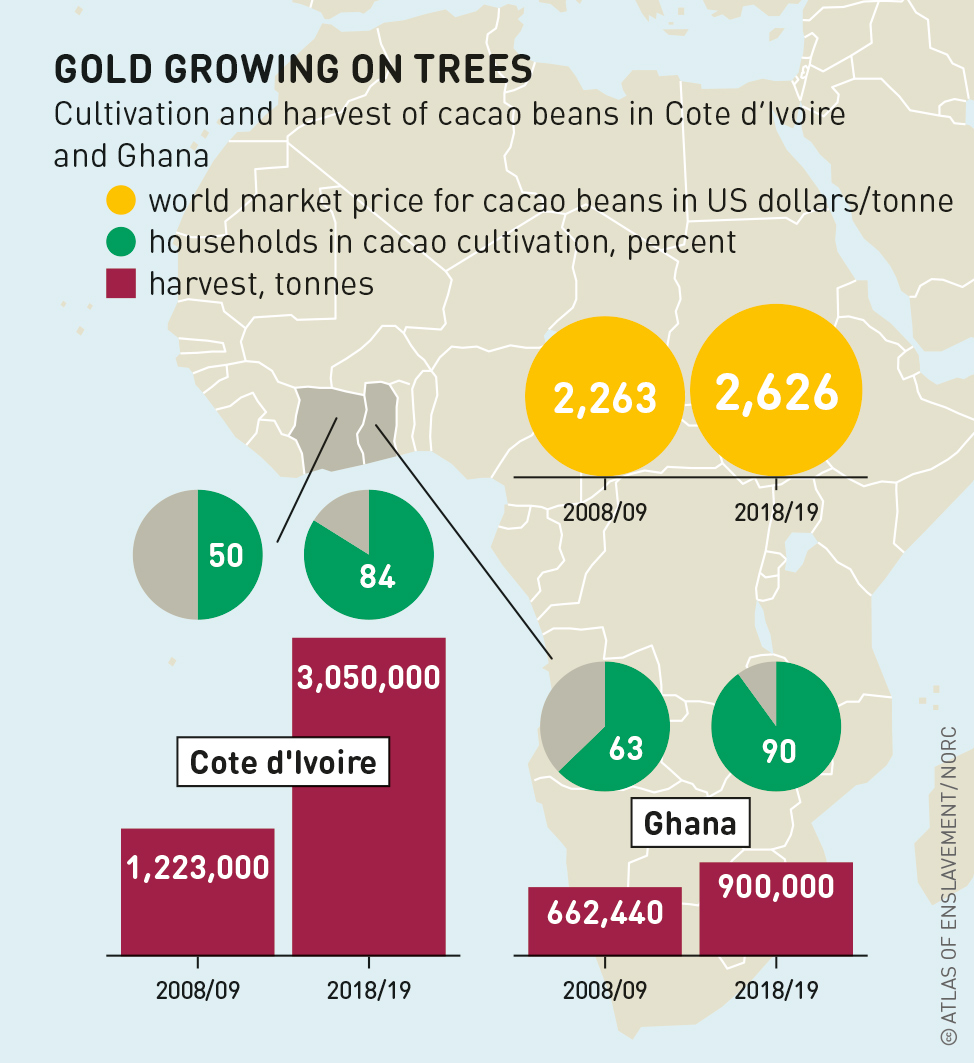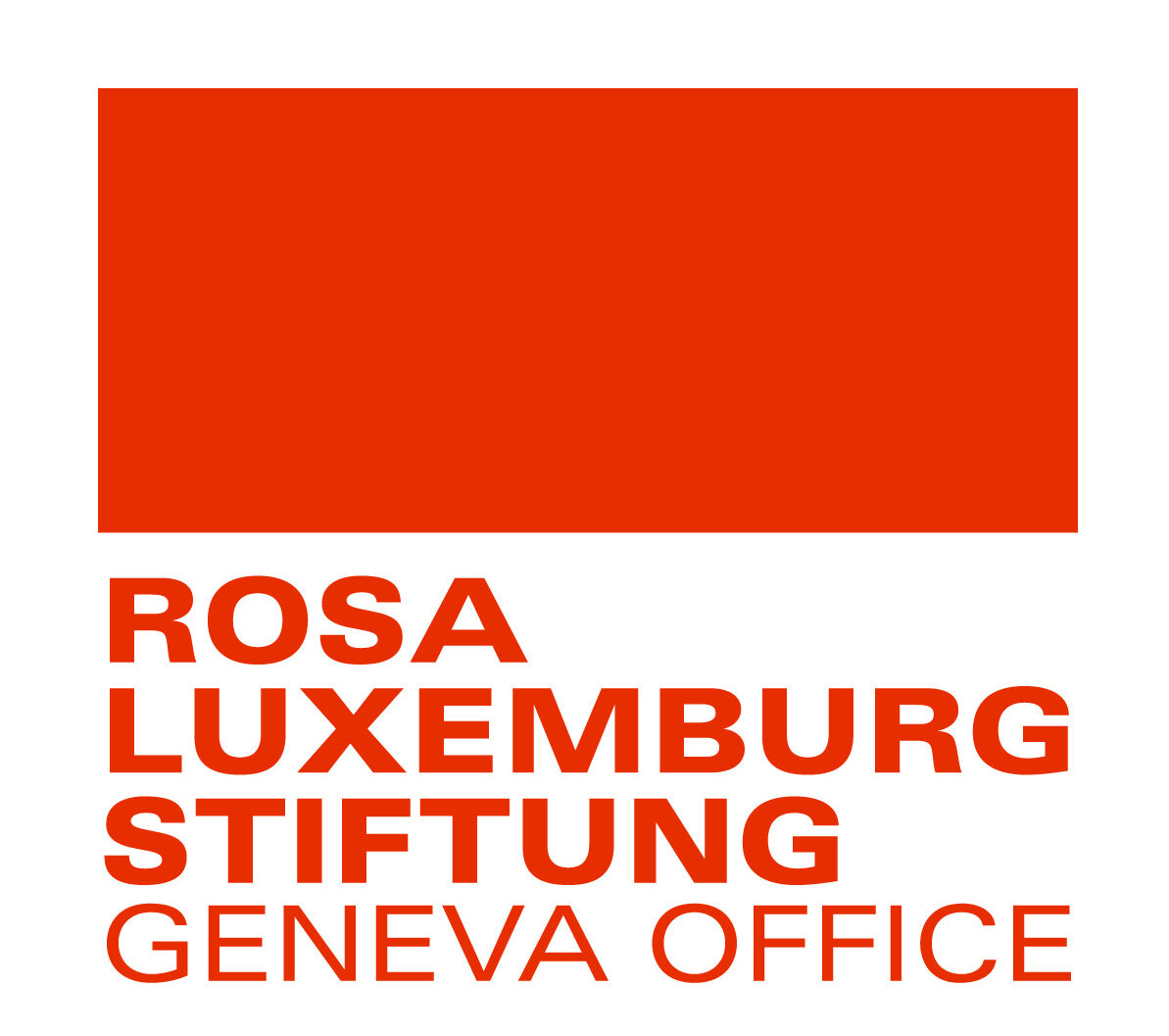What the Western world or the international community regards as unacceptable may be seen as normal and even desirable by some. Child labour is an example. It has been largely eliminated in the developed world. But for many families in developing countries, it is a vital source of income and a way to teach children skills they will need later in life.
In the early 2000s, a series of documentaries and media reports asserted that hazardous child labour, child bondage, child trafficking and other child rights violations were widespread in cocoa farming in West Africa. These accounts gained huge public and policy interest for two reasons. First, more than 50 percent of the cocoa beans used to make chocolate originate from West Africa. Consumers, many of whom are becoming increasingly concerned about the source of their purchases, were appalled that their favourite chocolate bars, drinks and other delicacies might have bitter origins. Second, the reports coincided with a renewal of efforts to abolish international child labour and child trafficking. Notable among these were the adoption of ILO Convention 182 on the Worst Forms of Child Labour in 1999 and the 2000 UN Protocol to Prevent, Suppress and Punish Trafficking in Persons, Especially Women and Children.

Research and media reports on the cocoa sector assert that many children work long hours and are exposed to hazardous pesticides and agrochemicals, and that injuries from tools such as cutlasses and chainsaws are common. In February 2021, six young adults claiming to have been used as slave labourers sued the world’s biggest chocolate companies – Nestlé, Cargill, Barry Callebaut, Mars, Olam, Hershey and Mondelēz. They accused them of being complicit in their enslavement and that of other children on Ivorian cocoa farms. The US Supreme Court dismissed the cases against Nestlé and Cargill because
US law does not apply in such instances. Such cases are part of the claims that child trafficking, child slavery, forced labour and other exploitative conditions are widespread in the sector.
In response to such concerns, a number of measures were taken to combat child labour and modern slavery in West African cocoa farming, beginning with the adoption of the Harkin-Engel Protocol – a 2001 international agreement to end the worst forms of child labour and forced labour in cocoa production. But the results have been less than convincing. An assessment by NORC, a research organization at the University of Chicago, in Ghana and Côte d’Ivoire, the two main cocoa-producing countries, found no reduction in the prevalence of child labour between 2008/9 and 2018/19. On the contrary, it recorded a 10–14 percent rise in the number of children working in the sector. This came after more than a decade and over 300 million US dollars invested by governments, international cocoa trading and chocolate companies, civil society and others to fulfil a pledge to reduce the worst forms of child labour in West African cocoa farming by 70 percent by 2020.
It is argued that the findings represent a remarkable failure by leading chocolate companies to eradicate the practice from their supply chains. But it also reflects the complexity of children’s work in this sector. The assumption is that human trafficking, forced labour and modern slavery are widespread, but in fact, most children’s work in West African cocoa farming takes place in a family context. According to the International Cocoa Initiative, about 98 percent of the estimated 1.5 million children involved in the Ghana and Cote D’Ivoire cocoa industries work on family farms. NORC found that 81 percent of children working in the sector do so with their parents, and 94 percent with either their parents or other relatives.

The “tall tales” on which some of the initial claims about the sector were based raise questions about the existence of widespread child slavery, servitude and human trafficking associated with the sector. Of course, exploitation, harm or abuse can occur even when children work with their families. But there are fundamental disagreements about normative notions on childhood, harm, exploitation and “bondage” that apply in cocoa-growing communities and those promoted by prevailing international, regional and national conventions, legal frameworks, policies and discourses. Many West African cocoa farmers see the involvement of children as a vital and virtuous aspect of their education, development and socialization. Instead of child abuse, exploitation or “enslavement”, the families see the children’s participation as an education or a means to teach them knowledge and skills that will benefit them as future cocoa farmers. Agriculture is seen as the most accessible and reliable source of income or livelihood, regardless of the risks.
So what needs to be done to respond to violence, exploitation or other harms that children are exposed to? First, there is the need for greater circumspection, contextualization and a sound understanding of the dynamics of children’s work and the risks involved. Characterizing virtually any form of risk to which a child is exposed as trafficking, bondage, modern slavery or the like may attract attention, but it limits understanding and the success of interventions. Secondly, the multiple dangers and insecurities faced by children in the West African cocoa industry cannot necessarily be considered in isolation from the broader global political economy in which cocoa production, sale and consumption are situated. Better remuneration of farmers and their families for their produce can help build the resilience of households and economies, eventually making child labour unnecessary or undesirable. Such measures have also helped wealthy industrialized countries to eradicate hazardous child labour and provide state-supported welfare opportunities for their citizens.
